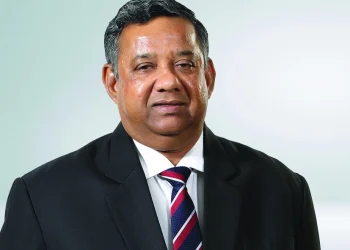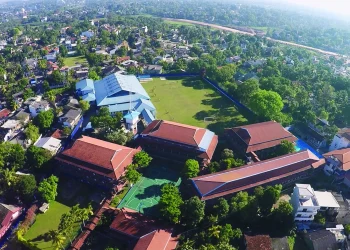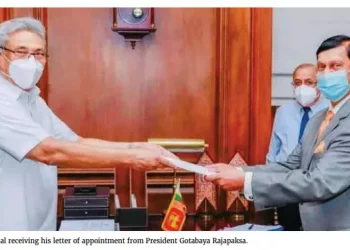For a long time, Sri Lanka’s power sector has struggled to meet the demand for a reliable and affordable electricity supply. Service in certain areas can be unreliable. Apart from the fact that the state aims to push for wider-ranging electrification of rural Sri Lanka, the power generation apparatus, including transmission and distribution networks, require development. Aware of these requirements, the Government of Sri Lanka has agreed with a foreign energy company to introduce Liquid Natural Gas to generate power in the future.
By Jennifer Paldano Goonewardane. Photos: newfortressenergy.com
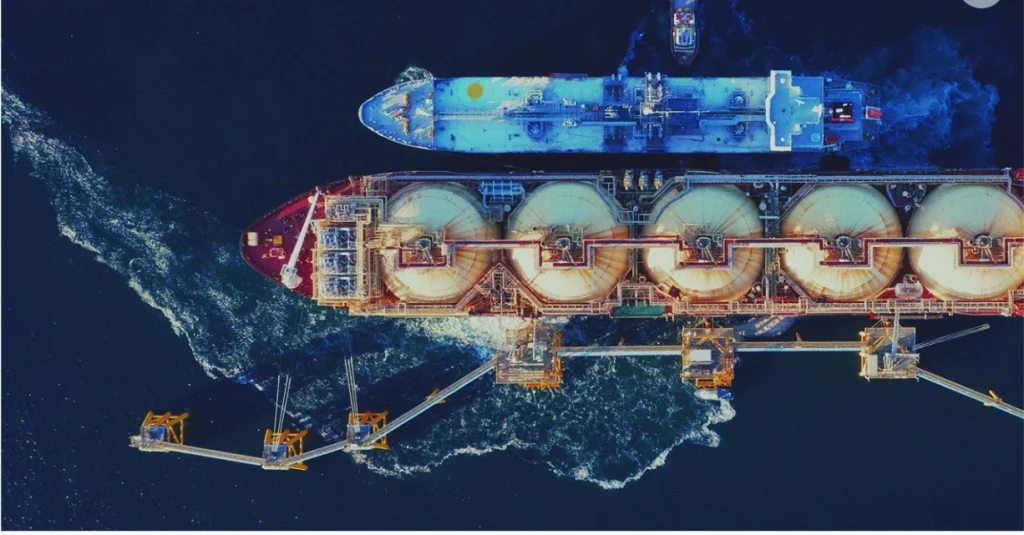
The year 2020 was going to be significant for Sri Lanka. With a new President in office, expectations were high. The swift onset of the COVID-19 pandemic all but halted the envisaged road to “vistas of splendor and prosperity,” at least temporarily. As the pandemic eased somewhat in Sri Lanka, the August 2020 parliamentary election followed. The outcome gave the new Government the two-thirds majority in parliament. The two-thirds were the last clarion call to the people to bequeath their leader the power to accelerate its development.
A little over a year later, what is significant about Sri Lanka’s landscape is that there’s never a week that goes by without a political juggernaut. Everybody’s up in arms. They include politicians and their associates, the clergy, de facto leaders and influencers, multiple groups of intellectuals and YouTubers, and anyone and everyone with a voice. What is startling is that it’s hard to do a critical analysis of what’s going on in the myriad of noises.
The deal
The latest tumult is over a government agreement with US-based energy infrastructure firm – New Fortress Energy (NFE) to supply Liquid Natural Gas (LNG) for power generation. According to the agreement, NFE would acquire the Treasury’s 40 percent stake in West Coast Power Ltd., which operates the 310 MW Yugadanavi power plant in Kerawalapitiya. West Coast Power operates Yugadanavi under a longterm power purchase agreement to provide electricity to the national grid extending through 2035. Reports in the media state that the sale of the Treasury’s stake in West Coast Power will fetch close to US$ 250 million for the Government. The newly signed “definitive agreement” also gives NFE the rights to build an offshore LNG receiving, storage, and regasification terminal near Colombo, eventually supplying an estimated 1.2 million gallons per day of LNG to Sri Lanka’s power generation sector. In the future, NFE will add 700 MW to the existing energy ecosystem by investing in new infrastructure, of which it plans to make 350 MW operational by 2023. Fortress has said that the offshore terminal will introduce natural gas to Sri Lanka for the first time and will assist the transition to lower-carbon energy sources.


NFE is buoyant about the deal it has managed to strike with the Government of Sri Lanka. The company claims that the arrangement is an investment in modern energy infrastructure to support sustainable economic development and environmental gains. LNG is considered the fastest-growing energy resource capable of saving power in today’s global energy landscape, thereby offering a cost-effective energy source for businesses and industries. With so much focus on climate change and reducing the emission of greenhouse gases, some stakeholders hail the use of LNG as a viable alternative to other fossil fuels owing to its structure that allows easy transportation, efficiency, and low carbon emission. The Government’s agreement with NFE is significant. The US Energy Information Administration estimates show that Asian countries combined account for the largest share of global LNG imports. If all goes well, Sri Lanka will soon be part of that gigantic regional conversion to better energy options and its role in minimizing massive Co2 emissions from coal and oil. According to official figures, in recent years, the importance of LNG in the international trade of natural gas has increased gradually. While in 2002, the LNG share accounted for 25.8 percent, it grew to 29.2 percent in 2008 and reached 32 percent in 2016. In absolute terms, LNG production increased from 143 to 346.6 billion cubic meters.
Credentials
With the agreement, Fortress has garnered visibility locally. If not, it may have remained another entity in the gargantuan global energy ecosystem. The company has an impressive portfolio. Established in 2014, Fortress is an international energy infrastructure company founded to convert existing power plants and build and manage new gas-fired facilities, including assets, to provide cleaner, reliable energy solutions. The company operates through two segments, namely, terminals and infrastructure and ships. The terminals and infrastructure section includes the entire production and delivery chain from natural gas procurement and liquefaction to logistics, shipping, facilities, and conversion or development of natural gas-fired power generation. Accordingly, NFE builds and operates onshore and offshore regasification terminals, power plants, and pipelines, among other operations. Currently, Fortress manages five LNG terminals and assets across the Caribbean, Central America, and Mexico for the next six years.
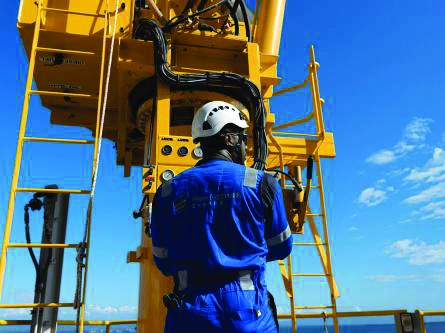

The company’s access strategy to a potential market is to identify places in short supply of affordable, reliable, and cleaner energy. The company is very conscious of the larger-than-life presence of energy poverty blighting developing countries. In response, Fortress focuses on providing those developing countries with the option of switching to cheaper and more reliable energy, thereby affecting positive economic and environmental consequences. Fortress touts LNG as an affordable and cleaner energy option for the world. The company embraces an ethos that emphasizes providing affordable clean energy to everyone, everywhere. Fortress’s principle is that electricity should not be a luxury. Absolutely. Essentially, it’s convincing and is telling everyone that electricity is a fundamental human right of every individual vis-à-vis every citizen, which is the bounden duty of the state to make it an inexpensive commodity for all. A country achieves affordability by replacing costly coal and oil-based fuels to generate electricity with LNG.
Fortress’s story is compelling. When it states that universal access to energy can impact major global issues such as education and poverty and pave the way for gender equality, one cannot counterargue because it’s true. Although electricity alone does not suffice to address major social malaises, it still is part of the solution to a problem that results in vulnerable groups continuing as marginalized. Historically, the power elite managed to subjugate the masses by depriving them of essential infrastructure facilities. The poor, being unlikely to have access to power, remain poor so long as they remain unconnected to the opportunities in the metropolis. In that regard, NFE’s message resonates well with the humanitarian community and the ‘justice league’ warriors. While Fortress seeks to partner in the global march towards providing access to electricity to everyone, it wants to do so in an environmentally responsible way. Of course, it goes without saying that through every injection of investment into a country, Fortress stares at huge returns.
The company that serves the US energy market by supplying LNG for power generation is proud of its investments in Jamaica, Mexico, Brazil, and Puerto Rico, impressively stamping its presence. It maintains onshore and offshore facilities for those countries’ power sectors. In 2017, the Fortress gave a fillip to the resort community in the Bahamas. It introduced off-grid power generation through LNG that stopped recurring power generation issues affecting the smooth operations in the vast resort property. In 2016 with the onshore Montego Bay Terminal commissioning by Fortress, Jamaica reduced its reliance on oil. In addition, the company maintains an offshore storage and regasification unit and natural gas pipeline in Jamaica. Fortress supplies natural gas to the onshore San Juan Combined Cycle Power Plant in Puerto Rico.
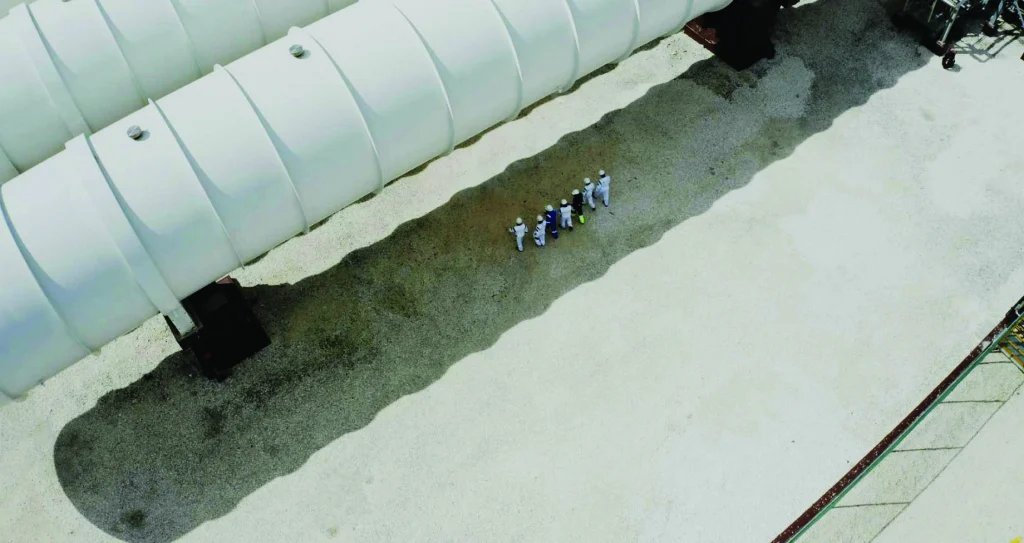
In its investment in those countries, NFE’s mission was to accelerate the transition from distillate fuels, enabling them to save billions of dollars in fuel savings, thereby lowering the price of electricity and the environmental footprint. Brazil is opening its natural gas industry to the private sector. And NFE is investing heavily in Brazil. Fortress this year signed an agreement to supply LNG for 15 years to the Pará region in Brazil through the Alunorte Alumina Refinery. The project intends to drive industrial growth in the Pará region by reducing the impact of carbon-intensive fuels’ harm to the environment. At the same time, the supply would benefit industries and people alike. In Sergipe, Brazil, the offshore facility supplies LNG to the adjacent 1.5 GW power plant and serves the surrounding region with reliable, affordable energy. The Fortress project in Mexico also marked a switch from oil-based to natural gas. According to the company’s testimonial, those projects have generated employment in those countries, trained a new and specialized workforce, stimulated development, and improved the environment’s management.
The company speaks to the customer – the potential country promising to customize power-generation solutions to help achieve higher efficiency and reduce costs. Given its expertise in the area, Fortress provides end-to-end management and implementation of projects. The company profile is replete with recurring catchwords such as reducing cost or cost-saving, affordable energy and efficiency in power generation, and reducing the carbon footprint, which hopefully conveys the thrust of its mission. Importantly, NFE highlights the ability to control and enjoy greater flexibility over energy production. The company has a broader agenda of becoming a zero-emissions company. To work towards realizing that mission, in 2020, Fortress established the Zero division. Through this new division, Fortress envisages by 2030 to become a zero-emissions company and global leader in providing emissions-free power. Fortress has developed and owns transportation and infrastructure projects worldwide and built industry-leading businesses in real estate, health care, financial services, media, and entertainment.
The energy ecosystem in Sri Lanka
The Sri Lankan State vis-à-vis the Ceylon Electricity Board (CEB) has had the classic monopoly of the electricity industry in Sri Lanka, generating, transmitting, and distributing electricity to the entire country – for residential and business purposes. The Lanka Electricity Co. (Pvt) Ltd. (LECO) was set up in 1984, with the usual niggling, as a shareholding company consisting of the CEB, the Urban Development Authority, the Treasury, and four local authorities. LECO is providing electricity to the Kotte Urban Council area – to domestic and industrial consumers. Sri Lanka generates its annual electricity demand, around 14,150 GWh, from thermal power, hydropower, and other nonconventional renewable energy sources.
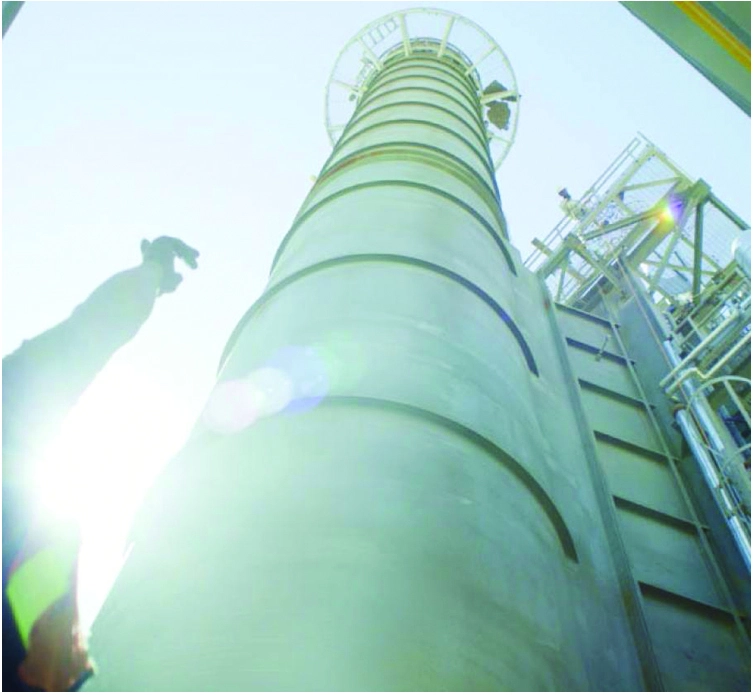
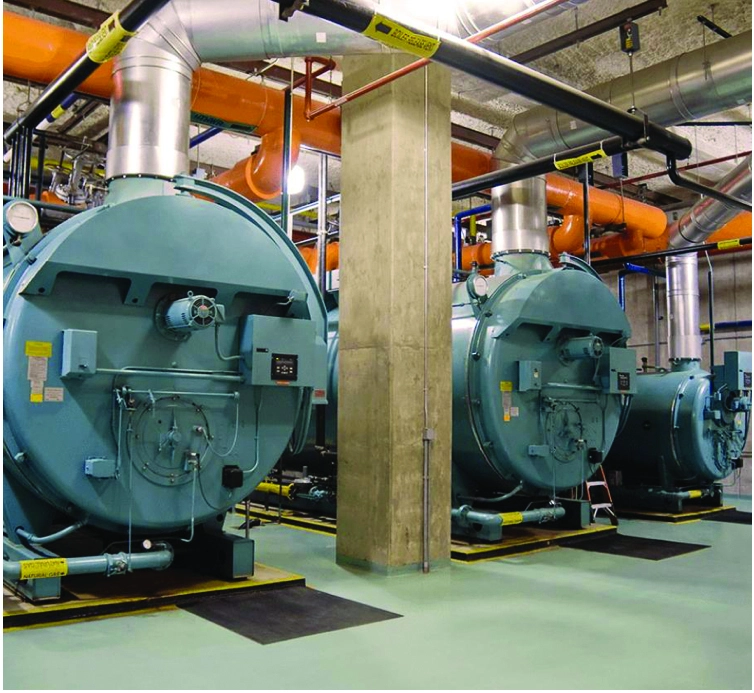
Sri Lanka’s biggest bane in the energy sector is the high cost of generating electricity. The CEB is not generating any revenue for the Government. Its losses are close upon 100 billion rupees. As a result, the Government has been forced to purchase power from independent power producers at a higher cost. The domestic energy demand has been growing, and successive governments have set out energy enhancement goals for the future. With a forecasted annual average growth rate of 4.9 percent in demand for energy, the plan has been to add more hydropower, solar, wind, biomass, coal power, natural gas, and oil-based power into the electricity generation system. In this respect, the deal with NFE is not a blueprint accomplished out of the blue. As the country’s demand for electricity is increasing, planning was going on to add 1,500 MW of natural gas to the country’s power generation infrastructure. In keeping with those plans, in February 2021, the Government requested proposals for a 300 MW LNG power plant, followed by an invitation for bids in June to establish infrastructure in LNG, including an offshore terminal for receiving, storing, and regasification of LNG. Subsequently, as part of its commitment to reduce fossil fuels and promote renewable energy sources, the Government announced that it would no longer undertake to build coal-fired power plants. This move demonstrates a commitment to join the global march against replacing fossil fuels with sustainable and renewable energy sources to mitigate the climate crisis. Sri Lanka has also committed to the Sustainable Development Goals (SDGs), of which protecting the planet is a key focus. In all fairness, the Government may argue that the LNG agreement is part of a long-term plan to add more megawatts to the local power generation system and did not come as a swift decision.
Because of the high cost of electricity generation, the consumer has no cost-benefit and instead is charged high tariffs for using electricity. According to reports, the introduction of LNG instead of coal and oil will benefit consumers by reducing electricity tariffs and lowering the electricity generation cost. All that makes sense, given that electricity has become an expensive commodity for the consumer when it is the state’s responsibility to provide it efficiently. And it’s also the responsibility of the Government to explore and pursue cost-effective means of generating power to transfer the benefits therein to the people. LNG is a cleaner and cheaper fuel. It all makes sense to select it as part of a broader strategy to go after affordable energy sources such as hydropower, solar, wind, biomass, and natural gas.
If that’s the case, one may wonder what the furor is all about. The problem, it seems, is with the clauses in the agreement. The deal is foul, the critics lament. The detractors allege that the tender procedure initiated and was moving forward came to a halt in favor of signing an agreement with NFE. The stories surrounding the signing of the deal, as absurd and comical as they may sound, is that it was top-secret. Such is the power of storytelling in today’s political landscape that it’s not hard for people to conjure up scenes of a clandestine subterfuge. But back in July 2021, Fortress signed the initial Framework Agreement for the said project with the Government of Sri Lanka, followed by the ‘Definitive Agreement’ in September 2021. The engineers of the CEB go on to claim that the deal is a rip-off as it would obligate the board to pay NFE even for unutilized LNG according to the terms of the ‘take-or-pay’ (TOP) provision, which is a standard clause in the energy sector. Accordingly, the CEB, they say, has no choice but to operate the LNG power plants 70 percent of the time. That, in turn, may cause the CEB to shut down the use of power plants that use renewable energy sources to enable the use of LNG-generated power supply. In terms of the agreement, they claim that if the agreed amount of LNG goes unused, the company will receive payment for the agreed amount of MW expected to generate. As a result, the country has to allow the increased use of LNG-backed power generation to avoid paying for unutilized LNG, even when there is a surfeit of renewable energy sources. The price formula, they say, is all in favor of NFE.
The laments of the public sector
There is a strong ethos that governs Sri Lanka’s public sector. State monopoly is sacrosanct. Public sector employees consider themselves the protectors of people’s rights, and their objections to reforms and diversification are supposedly for the greater good. There’s no doubt that the public sector in Sri Lanka is a powerful block. Every political party is overly cognizant of this fact and would be slow to rumple any sentiments lest they lose support. Employees in stateowned enterprises mostly enjoy job security. In some instances, they are privileged to a pension too.
Nevertheless, public sector employees who are heavily unionized are suspicious of governments in power. They deem even the slightest hint of change as a threat to their rights and their jobs. There has been a solid unionizing and an anti-privatization movement that has often portrayed any attempt by an incumbent government to restructure a state entity as an unseen specter that would wreak havoc once allowed inside. But, proponents of diversification or even privatizing state-owned entities would point out that a state monopoly gives a minimal choice to the people in terms of cost and aspirations, service quality and delivery, and competitiveness. The telecommunications industry in Sri Lanka is a good case in point. Sri Lanka Telecom went through a restructuring in 1997 which led to its privatizing by an agreement with Japan’s Nippon Telegraph and Telephone Corporation (NTT), which bought 35.2 percent of the company’s share for US$ 225 million. Today, SLT has become a titan in terms of owning the best ICT infrastructure in the country, thereby empowering and transforming the nation through digitization. The merits of diversification and restructuring accrue to the country’s people – the majority stand to gain from the improvement in quality, technology, and the competitiveness it brings to the table. Today, SLT provides 4G/LTE technology and is on board the South East Asia-Middle East-West Europe submarine cable system linking South East Asia to Europe via the Indian Sub-Continent and the Middle East. This submarine cable system offers Sri Lanka an immense bandwidth advantage and paves the way to make Sri Lanka a globally competitive business hub. In the long run, diversifying the telecom market has allowed the entry of private players, who are themselves leading foreign telecommunication service providers. Sri Lanka Telecom owns Mobitel, one of Sri Lanka’s leading mobile service providers. Initially, SLT’s stake in Mobitel was 40 percent, but in 2002 it bought the remaining 60 percent stake that Australian Telstra had in the company. Today, Mobitel is on par with the other mobile service providers in Sri Lanka, giving efficient countrywide coverage and broadband facilities. SLT is the only state-owned entity that earns a profit and pays the Government part of its earnings. Diversifying telecommunications has provided consumers a choice and competitive advantage, where the providers are competing with each other to attract and maintain customers.
Trade unions, executives, and politicians who brandish power in a state-owned entity will naturally oppose any move to diversify energy because each group has something to lose. Obviously, with new companies in management operations, there will be accountability and efficiency. The freewheeling work routine with a bit of sidestepping will not prevail. And some people’s power and influence are likely to diminish. But often, the greater good that the public sector claims to defend is at the cost of the majority of people in this country, who would otherwise have to induce the government employee to get a job done.
What’s in it for Sri Lanka
By introducing new energy sources, diversifying the sector will reduce Sri Lanka’s dependency on coal power and oil to fulfill its energy needs. Like oil, the global gas market is also volatile. But going by the benefits accrued by countries that have opted to diversify their energy sector by converting to LNG, the latter is affordable and less volatile in terms of price stability than oil. In the long-term, though, Sri Lanka should focus on its new partner, NFE, to ultimately leverage its potential to create carbon-free power. As Sri Lanka seeks to become self-sufficient in energy by 2030, it should exploit the sun, the wind, the tide, and the water resources adequately over and above its dependency on oil and gas. Sri Lanka is undoubtedly cognizant that the technology surrounding renewable energy is changing. Countries in Europe and East Asia invest in alternative energy sources to reduce their dependence on oil and gas-producing countries while joining the quest to save the planet. While many may contend that globally, there is a lack of congruence about when the world would shift to renewable energy from fossil fuels, it is beholden upon Sri Lanka to join the renewable energy revolution sweeping the global narrative sooner than later. In doing so, partnering with technology giants in renewable energy production may be essential. And that is where an incumbent government needs to do the tight rope walking with belligerent and beleaguered state-sector employees whose ultimate passion to stand up for the greater good must also include giving the best deal to the end-user – the customer. One global energy giant – Shell, has predicted that the global oil demand would peak and fall by 2025. If so, Sri Lanka must be ready. The good thing is that scholars expect that as the world accelerates the deployment of renewables, the global power structure skewed in favor of nations that hold the reins to oil and gas supplies will undergo drastic changes with a shift to the distribution of power.
Diversification of the energy sector, as pointed out in studies, should bring benefits to an economy. For instance, reforms deliver low electricity tariffs and increased private investment. Moreover, the energy transition has shown that reforms play a crucial role in ensuring energy security and climate change mitigation in countries like Mexico.
Sri Lanka is experiencing a rising demand for energy vis-à-vis electricity. The transition to hydropower which began in the 1980s is considered the best alternative to fossil fuels. However, the unpredictable weather patterns have posed a challenge to the effective use of hydropower for electricity generation, forcing successive governments to seek alternatives, such as coal power, to generate electricity. On the one hand, LNG can achieve greater competitiveness by supplying critical infrastructure through NFE through technology in this instance. The benefit of this new venture should ultimately be in favor of the consumer as reduced electricity prices for households and businesses alike and increased thrust to provide energy to more people. Some would argue that the cost reduction may happen only in the short-term and not in the long term due to the increasing cost of production and connectivity issues. If anything, increasing corporate efficiency may follow this. Then there’s bound to be an increase in service and connectivity. But the ultimate objective of any initiative to reform the energy sector or any sector should be to transform an entity into a profitable operation. The administration has to push for investments through restructuring and diversification alternatives to make a loss-making entity like the CEB turnaround to profitability.
The greater good
In conclusion, those who wield power in decisionmaking should not stifle access to energy to fight poverty. As Sri Lanka commits to achieving SDGs, ending poverty is a priority for the Government and protecting the environment. Granting affordable access to energy to all its citizens buttresses the achievement of tackling poverty and other conditions like hunger, disease, and gender inequality. As it is, Sri Lanka cannot continue its trajectory of unreliable and costly service with high energy generation costs that ultimately accrue to the consumer. Today, never like before, people are cumbered by the effects of the pandemic. Costly sources of power generation are not the response to fulfill future needs. Energy efficiency and energy-efficient technologies are vital for cost-effectiveness, according to sector experts. Adopting efficiency in all areas of power generation would eventually sever the link between energy demand and economic development.


